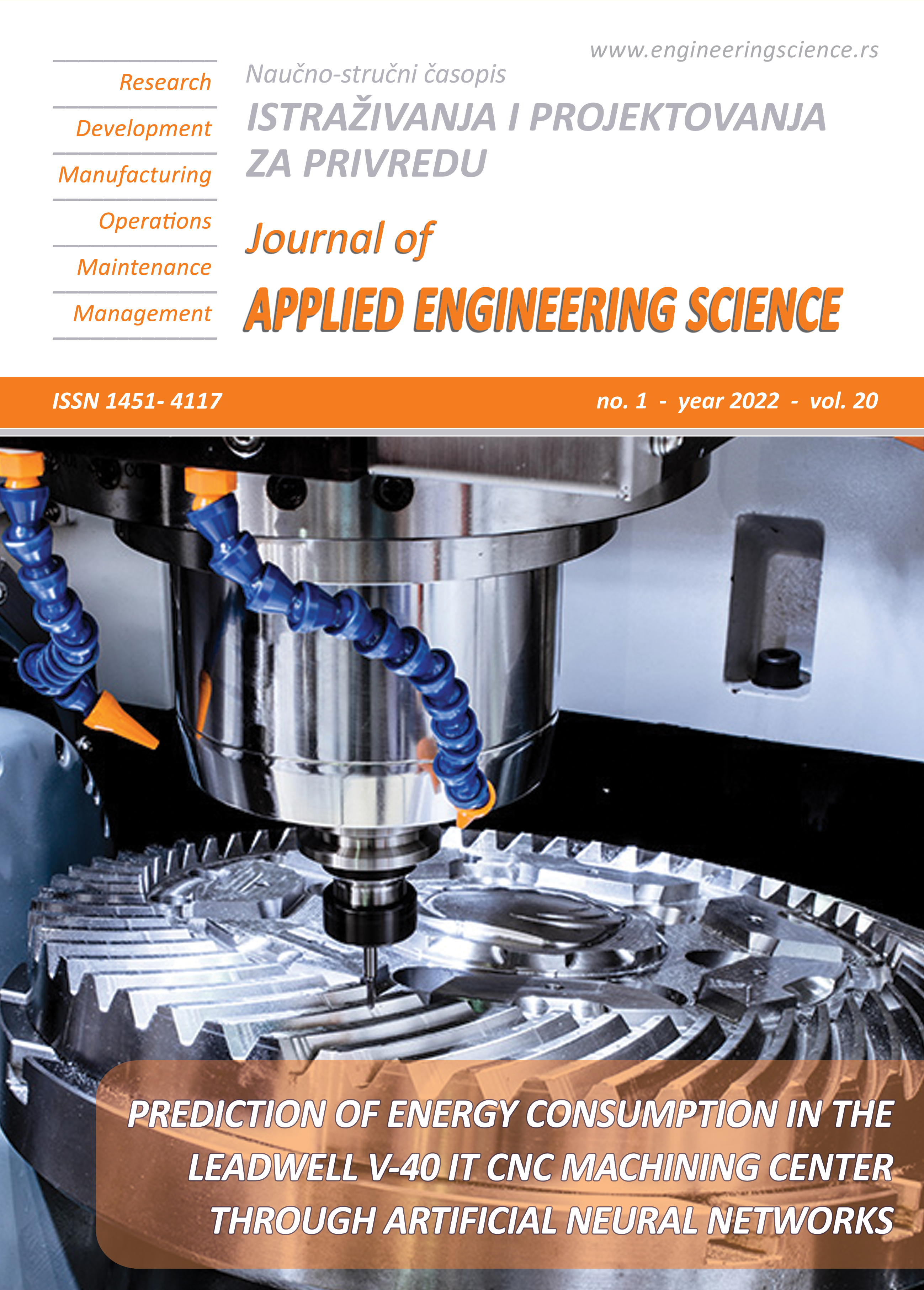INCORPORATING AN OUTSOURCING STRATEGY AND IN-HOUSE QUALITY ASSURANCE INTO THE PRODUCTION-SHIPMENT DECISION MAKING
Abstract
To stay competitive in turbulent business environments, manufacturing firms’ managers today constantly seek ways to reduce order response time, smooth production schedules, ensure the quality of their products, and lower overall making and shipping costs. This study incorporates an outsourcing strategy and in-house quality assurance into a production-shipment problem to address the aforementioned operational goals. The objectives are to simultaneously find the optimal fabrication batch size and frequency of delivery that minimize the system’s relevant costs and reveal in-depth information regarding the impact of diverse system parameters on the optimal policy and system cost. This study develops a model and uses the optimization method to resolve the problem. The research results facilitate managerial decisions in such a real-life situation.
References
Leavy, B. (1996). Outsourcing strategy and a learning dilemma. Production and Inventory Management Journal, 37(4),50-54.
Chalos,P., Sung, J. (1998). Outsourcing decisions and managerial incentives. Decision Sciences, 29(4), 901-917. https://doi.org/10.1111/j.1540-5915.1998. tb00881.x
Levina, N.,Ross, J.W. (2003). From the vendor's perspective: Exploring the value proposition in information technology outsourcing. MIS Quarterly: Management Information Systems, 27(3), 331-364. https://doi.org/10.2307/30036537
Serrato, M.A., Ryan, S.M., Gaytán, J. (2007). A Markov decision model to evaluate outsourcing in reverse logistics. International Journal of Production Research,45(18-19),4289-4315. https://doi.org/10.1080/00207540701450161
Proff, H. (2011). Where differentiating automobile manufacturers go wrong: Strategic challenges posed by increased outsourcing.International Journal of Automotive Technology and Management, 11(1), 16-35 DOI: 10.1504/IJATM.2011.038119
Balachandran, K.R., Wang, H-W., Li, S-H., Wang, T. (2013). In-house capability and supply chain decisions. Omega, 41(2), 473-484. https://doi.org/10.1016/j.omega.2012.01.003
Chiu, Y-S.P., Liang, G-M., Chiu, S.W. (2016). Solving a fabrication lot-size and shipping frequency problem with an outsourcing policy and random scrap. Mathematical and Computational Applications, 21(4), Article No. 45. https://doi.org/10.3390/mca21040045
Skowronski, K., Benton Jr., W.C. (2018). The influence of intellectual property rights on poaching in manufacturing outsourcing. Production and Operations Management, 27(3), 531-552. https://doi.org/10.1111/poms.12813
Cortinhal, M.J., Lopes, M.J., Melo, M.T. (2019). A multi-stage supply chain network design problem with in-house production and partial product outsourcing. Applied Mathematical Modelling, 70, 572-594. https://doi.org/10.1016/j.apm.2019.01.046
Thongrawd, C., Skulitsariyaporn, C., Sirisopana, S., Chomchom, N. (2020). The impact of the strategic supplier partnership, and strategic outsourcing on the supply chain performance: The mediating role of customer relationship. International Journal of Supply Chain Management, 9(2), 562-571. https://ojs.excelingtech.co.uk/index.php/IJSCM/article/view/4661
Chiu, Y-S.P., Sung, P-C., Chiu, V. (2020). A two-phase solution approach for a manufacturing-distribution problem with rework, outsourcing, and multi-shipment policy. Journal of Applied Engineering Science, 18(4), 505-509. https://doi.org/10.5937/jaes0-26156
Rosenblatt, M.J., Lee, H. L. (1986). Economic production cycles with imperfect production processes. IIE Transactions, 18, 48-55. https://doi.org/10.1080/07408178608975329
Rahim,M.A., Ben-Daya, M. (2001). Joint determination of production quantity, inspection schedule and quality control for imperfect process with deteriorating products. Journal of the Operational Research Society, 52, 1370-1378. https://doi.org/10.1057/palgrave.jors.2601238
Ojha, D., Sarker, B.R., Biswas, P. (2007). An optimal batch size for an imperfect production system with quality assurance and rework.International Journal of Production Research, 45(14), 3191-3214. https://doi.org/10.1080/00207540600711853
Sana, S.S. (2010). A production–inventory model in an imperfect production process. European Journal of Operational Research, 200(2), 451-464. https://doi.org/10.1016/j.ejor.2009.01.041
Adazabra, A.N., Viruthagiri, G., Shanmugam, N. (2018). Manufacture of lightweight clay bricks with improved thermal insulation properties via the incorporation of spent shea waste. Journal of Applied Research and Technology, 16(3), 186-203.https://jart.icat.unam.mx/index.php/jart/article/view/717
Tannady, H., Gunawan, E., Nurprihatin, F., Wilujeng, F.R. (2019). Process improvement to reduce waste in the biggest instant noodle manufacturing company in South East Asia. Journal of Applied Engineering Science, 17(2), 203-212.https://doi.org/10.5937/jaes17-18951
Ben Fathallah, B., Saidi, R., Dakhli, C., Belhadi, S., Yallese, M.A. (2019). Mathematical modelling and optimization of surface quality and productivity in turning process of aisi 12l14 free-cutting steel. International Journal of Industrial Engineering Computations, 10(4), 557-576. http://dx.doi.org/10.5267/j.ijiec.2019.3.001
Pinto, G., Silva, F.J.G., Fernandes, N.O., Casais, R., Baptista, A., Carvalho, C., (2020). Implementing a maintenance strategic plan using TPM methodology, International Journal of Industrial Engineering and Management, 11(3), 192-204. http://dx.doi.org/10.24867/IJIEM-2020-3-264
Taft, E.W. (1918). The most economical production lot. Iron Age,101, 1410–1412.
Goyal, S.K. (1977). Integrated inventory model for a single supplier - single customer problem. International Journal of Production Research, 15(1), 107-111. https://doi.org/10.1080/00207547708943107
Banerjee, A. (1986). A joint economic-lot-size model for purchaser and vendor. Decision Sciences, 17(3), 292-311. https://doi.org/10.1111/j.1540-5915.1986.tb00228.x
Viswanathan, S. (1998). Optimal strategy for the integrated vendor-buyer inventory model. European Journal of Operational Research, 105(1), 38-42. https://doi.org/10.1016/S0377-2217(97)00032-5
Sarker,B.R., Diponegoro, A. (2009). Optimal production plans and shipment schedules in a supply-chain system with multiple suppliers and multiple buyers. European Journal of Operational Research, 194(3), 753-773. https://doi.org/10.1016/j.ejor.2008.01.025
Chiu, S.W., Chen, H.-M., Lin, H.-D., Chiu, Y.-S.P. (2018). Optimization of an intra-supply chain system with unreliable production facility. Journal of Applied Engineering Science, 16(2), 192-201. https://scindeks.ceon.rs/article.aspx?artid=1451-41171802192C
Buriticá, N.C., Escobar, J.W., Gutiérrez, R. (2018). Supply network design by using clustering and mixed integer programming, International Journal of Industrial Engineering and Management, 9(2), 59-68. https://www.researchgate.net/publication/327882621
López-Ruíz, S., Carmona-Benítez, R.B. (2019). The design of a liquefied natural gas (LNG) distribution network of a company operating in Mexico. Journal of Applied Research and Technology, 17(4), 213-249. https://jart.icat.unam.mx/index.php/jart/article/view/818
Bouziyane, B., Dkhissi, B., Cherkaoui, M. (2020). Multiobjective optimization in delivering pharmaceutical products with disrupted vehicle routing problem. International Journal of Industrial Engineering Computations, 11(2), 299-316. http://dx.doi.org/10.5267/j.ijiec.2019.7.003
Shavdinova, M., Aronson, K., Borissova, N. (2020). Development of condenser mathematical model for research and development of ways to improve its efficiency. Journal of Applied Engineering Science, 18(4), 578-585. https://aseestant.ceon.rs/index.php/jaes/article/view/27517
Rardin, R.L. (1998). Optimization in Operations Research. Prentice-Hall, New Jersey, 739-741.

